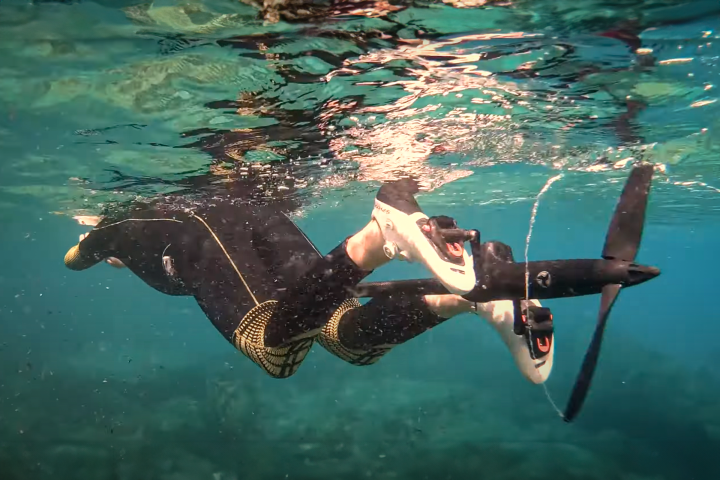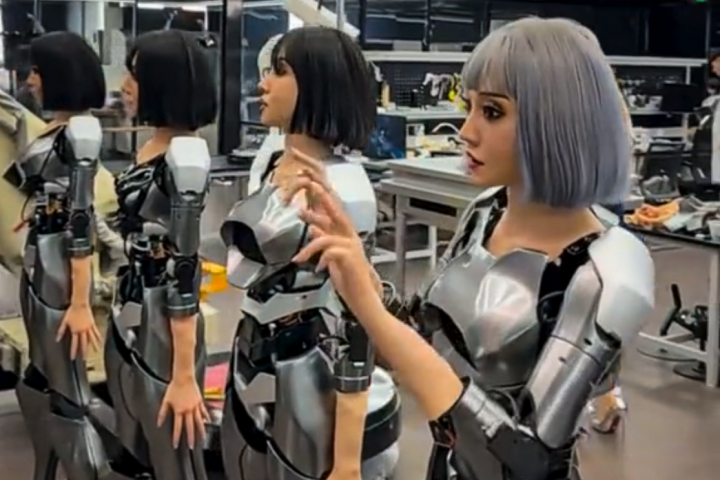When the i3 concept was unveiled alongside the i8 coupe concept back in 2011, it was the i8 that hogged the spotlight in commercials and Mission: Impossible – Ghost Protocol. But BMW engineers were hard at work in Germany developing real world production plans for the i3 and BMW is now set to put its first fully electric vehicle into mass production by the end of 2013. But the wee urban EV plays only a small part in BMW’s overall sustainability program.
To quickly recap, the i3 is designed as a fully electric inner city four seater. Using BMW’s eDrive technology, the i3 will have a range of around 130 to 160 km (80 to 100 mi), which means most urban users at which it is targeted will only have to recharge it every two or three days. Generating 125 kW (170 hp) of power to the rear wheels and 250 Nm of torque (184.4 lb.ft), BMW reports performance figures of 0 to 100 km/h (62 mph) in eight seconds and a top speed estimated at 150 km/h (93 mph).
The company claims the i3's range can be increased to 200 km (124 mi) through its “EcoPro” modes (Eco Pro and Eco Pro+), while a “range extender” will also be available as an optional extra that will add another 130 km (80 mi) to the vehicle’s range. The i3 can be fully recharged in six hours via a standard outlet, or to an 80 per cent charge in 30 minutes using a fast charger.
Battery issues
Batteries, fickle things that they are, function best at room temperature, with heat and cold significantly affecting their performance. But since most cars aren't driven indoors, BMW has developed a system designed to keep the i3’s battery in the sweet zone, which in turn increases battery life and range. The intelligent heating/cooling system uses air conditioning coolant to cool the battery when things are heating up, and when things turn polar, a pre-heater warms the battery to optimal operating temperatures while plugged in. BMW claims this system helps ensure the lithium-ion battery should last the lifetime of the car.

Batteries are considered the weakest link in the sustainability chain and highly undesirable as a recyclable component. BMW again recognized this as a long term sustainability issue and set in motion a plan to repurpose, or re-use i3 batteries. After roughly 1,000 charging cycles the i3's batteries are serviced and put to use as short term solar storage units for residential energy consumption. On a commercial level, several batteries can be linked together to form either large scale energy storage units or brought into the grid to act as supplemental power banks.
Increasing drive range is the critical moving target and ongoing challenge for manufacturers when it comes to electric vehicles. The smallest electrical device can decrease range, add several power sucking devices together and range can be drastically impacted. In the case of the i3, BMW addressed this niggling issue by incorporating items like a low-power heat pump system that the company claims saves 30 percent more power in traffic relative to a normal heater. In the cockpit LEDs are used to illuminate the cabin versus traditional low efficiency bulbs, further reducing power draw and increasing range.

CFRP brings weight reductions
Vehicle weight, another range-robbing factor was also on BMW's hit list when developing the i3. It makes widespread use of CFRP, which in addition to weight reduction, also offers advantages in terms of safety. Due to issues like cost, production line flexibility and overly complex manufacturing processes, CFRP has largely been limited to use in supercars like the Lamborghini Sesto Elemento. But over the past ten years, BMW has put millions of dollars and countless hours of research into making CFRP a viable option for mainstream production. TO that end, BMW claims it is the first manufacturer to have the facilities and manufacturing techniques in place to enable widespread use of CFRP in mainstream vehicles. In keeping with its “cradle to grave” philosophy, BMW has also come up with what it claims is the world’s first CFRP recycling concept. Various body components, production waste and even parts from damaged i3’s will find their way back into production following a unique sorting process that separates “resinated” materials from non-resin parts. Excess CFRP cuttings, sans resin, that would normally be discarded are instead repurposed back into non-woven textiles and worked back into the vehicle. BMW claims around ten percent of the carbon fiber used in production of the i3 is derived from recycled materials.
Sustainability begins in the factory
Even before wheels hit the ground BMW, sought to make the manufacturing process as eco-friendly as possible. At BMW’s Leipzig shop (certified LEED Gold) in Germany, the company’s energy requirements are addressed via four wind power systems. The systems not only provide all the power necessary for production but actually over produce for the facility's requirements. Producing 26 GWh a year, the four Nordex N100/2500 turbines develop a yearly surplus of up to 2 GWh. This excess power is then redirected out to other processes at the Leipzig site, further reducing its overall energy footprint. BMW reports the Leipzig facility garners another 50 percent savings in energy and 70 percent savings in water usage relative to its other more traditional manufacturing facilities.

At a dedicated facility in Moses Lake, Washington, BMW has partnered with SGL Group to fill all the i3's carbon fiber requirements. Producing carbon fiber since 2011, the hi-tech CFRP facility runs two lines, capable of producing 1,500 tonnes of fiber per year. Fibers are then shipped to the Wackersdorf Innovation Park where they are transformed into basic carbon fiber sheets. From there the sheets are shipped to the Bavarian villa of Landshut, and pressed into various CFRP components for the i3. BMW claims that in comparison to conventional CFRP production, CO2 output from the Moses Lake facility is roughly 50 percent less than its competitors.
Leipzig also participates in the forming process by transforming the sheets into their respective 3D forms. These 3D forms can then be assembled to form larger components with relative ease as compared to aluminum or sheet metal processes. According to BMW, this CFRP development allows for modification of parts at any time during the manufacturing process, resulting in faster redesign turnaround and less downtime as compared to traditional steel component reconfiguration.
BMW’s new pressing plant not only has the flexibility to adapt but is further designed to reduce the speed and time in which CFRP components are manufactured. Pre-formed parts are available in minutes thanks to the company’s proprietary manufacturing process that deletes the time-sucking phase of curing from the equation. Not only does BMW’s process reduce component output time, but parts such as a door frame can be processed with critical structural details already included. The advantage to this holistic process enables BMW to more quickly produce i3 components that are lighter, require less structural elements and less overall energy to produce.

Contributing to increased component bonding times, BMW developed a new CFRP-friendly adhesive. Whereas traditional fiber bonding required anywhere from 12 to 24 hours, the new adhesive can be processed in ninety seconds, and become hard in only 30 minutes. According to BMW, this represents a ten-fold reduction in processing over the traditional method. BMW also learned that by heating key adhesion areas they could increase the curing process by a factor of 32.
"LifeDrive Architecture"
BMWs new architecture for the i3 is premised around what it calls “LifeDrive Architecture.” The method essentially mounts the CFRP “life module” or passenger compartment, on to an aluminum chassis. Whereas the method of combining pod with frame is not new, what is new the use of a CFRP cocoon in the mix. The pod is then populated with seats, steering wheel, doors, etc and finished off with exterior body panels. The result is a cabin whose volume statistics are reported to exceed that of vehicles of a similar wheelbase.

The lower half of the architectural arrangement, where the i3’s lithium-ion battery is located underfloor, is a lightweight aluminum frame that holds the electric motor, transmission and differential. According to BMW, the i3 meets or exceeds safety requirements as a result of the aluminum subframe design and CFRP life-pod architecture.
In its first foray into the mass production of an electric vehicle, BMW has shown that its sustainability goals are about more than just the conveyance and production of the vehicle itself. From manufacturing to infrastructure, and recycling to end of life cycle strategies, the company is clearly demonstrating itself to be an industry leader when it comes to the implementation of sustainable processes in developing electric vehicles like the i3.
The i3 is scheduled to go into production at the end of 2013 and is expected to have price in Europe starting at around €40,000 (US$51,000).
The i3 and some of its features can be seen in the following video.
Source: BMW


























